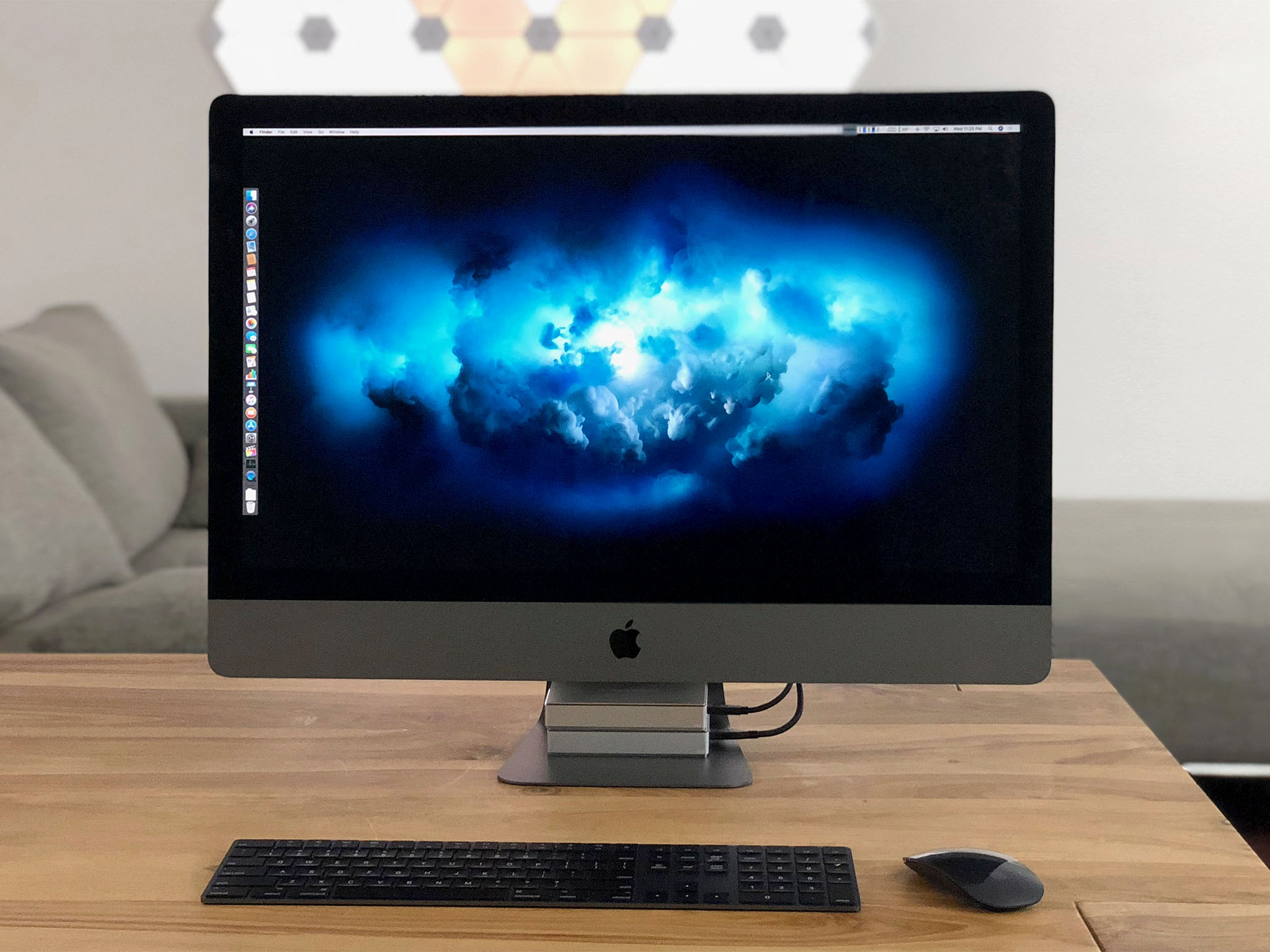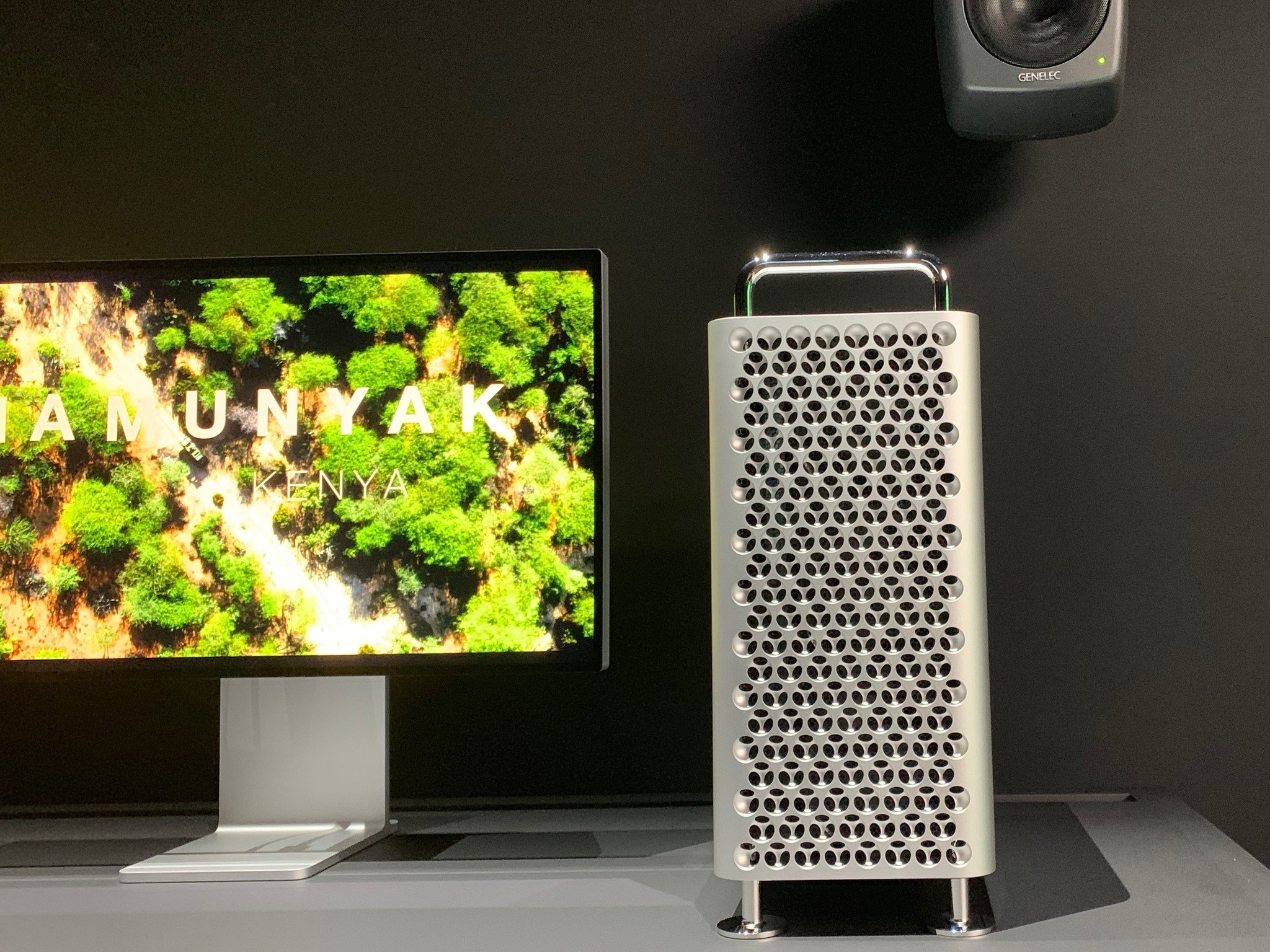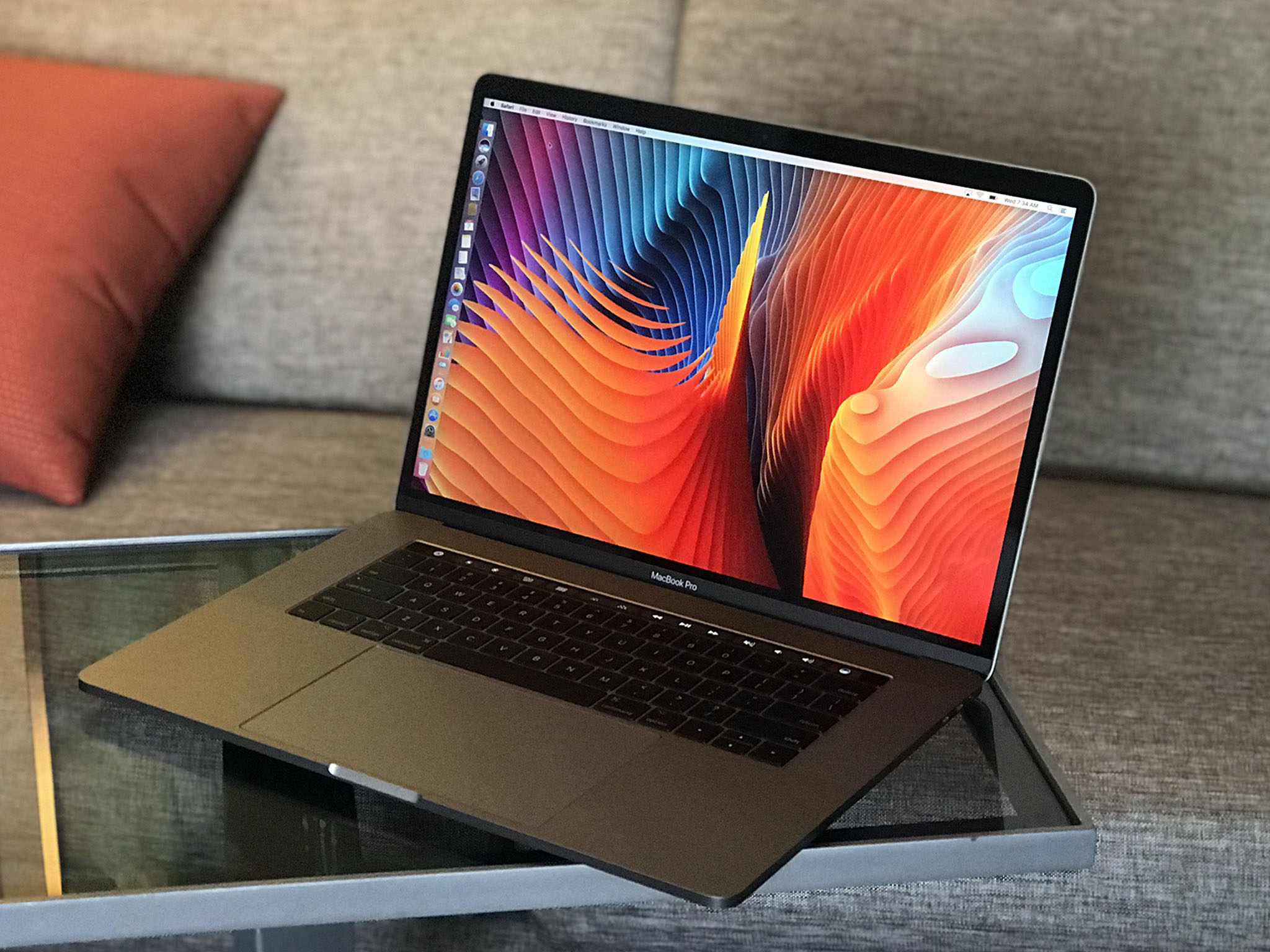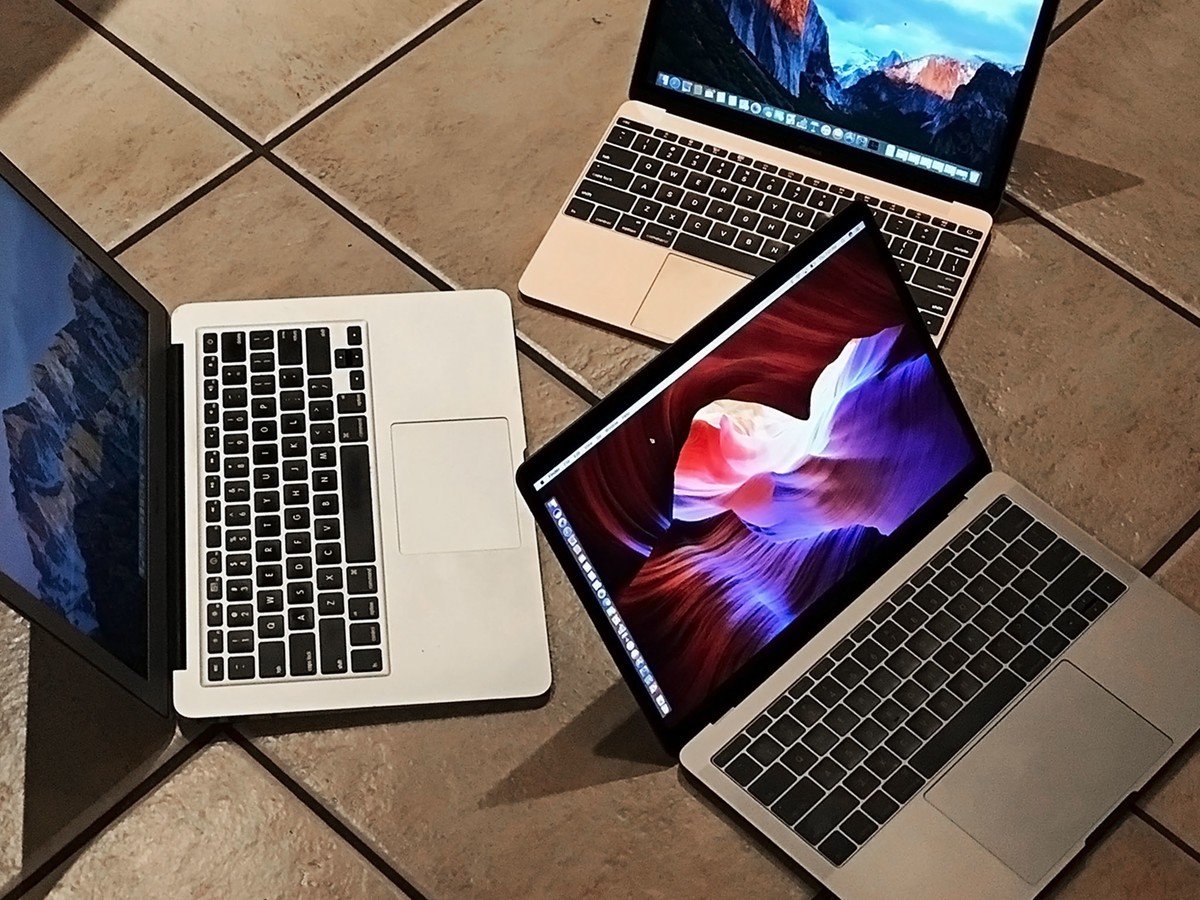Rene Ritchie: What Apple Silicon means for the Mac and You
The Mac's transition from Intel to Apple Silicon will take a year or two — but what does this all mean for you?
During the WWDC keynote, Tim Cook announced that, just like Apple had previously transitioned the Mac from PowerPC to Intel processors, they'd now be transitioning it from Intel to Apple silicon.
That's right, Apple silicon, not ARM, because Apple doesn't use ARM chip designs the way other companies do, they license the ARM instruction set for their own custom designs.
And, just like Steve Jobs never said PowerPC to x86, but PowerPC to Intel and everyone recognized Intel from… being inside Windows PCs, Tim Cook said Intel to Apple silicon, which everyone will recognize from where they're inside — iPhones and iPads.
(Though I do kinda hope Phil Schiller and company comes up with a slicker brand name at some point because PowerPC or Intel Mac is just so much easier to say than Apple silicon Mac. And they've used Fusion and Bionic for iOS generations in the past. But I digress.)
So, while there are still a few more Intel Macs that are going to ship, we're basically at the end of Core i5 or i7 or i9 processors being what powers the Mac, and at the beginning of something like the A-series currently found in the iPad Pro taking over.
Year of Intel, years of Apple silicon
Back in June of 2005, Steve Jobs predicted the switch from PowerPC to Intel would start at the beginning of 2006 and finish by the end of 2007. And developers were given a cheese-grater tower with a Pentium inside to help get their software going.
In January of 2006, the first Intel Macs were announced — the 15-inch MacBook Pro and the iMac. But Apple soundly beat their end goal by announced the last Intel Macs, the Mac Pro, and Xserve — Wikipedia it — by August of 2006. Which was, yeah, way ahead of schedule.
Still, Tim Cook laid out a similar timeline for this new Apple silicon transition. Right now, developers can get a Mac mini with an Apple A12Z inside — the same chip currently powering the 2020 iPad Pro.
The first Mac with Apple silicon will ship by the end of this year, which some people have assumed will an iPad-like ultralight MacBook, maybe a new 12-inch, and others have hoped would be an homage to the previous transition — either a MacBook Pro, iMac, or both.
And, also just like before, the entire transition is expected to take 2 years. Which, while you never know what problems might come up, based on last time, sounds a little like Scotty's estimates from Star Trek at this point. That's how you get your reputation as a miracle worker, after all.
It does imply, though, that it's a complete transition, again same as before. If so, maybe it completes the same way as well — with a new Mac Pro and maybe iMac Pro at the very end.
In terms of Intel Macs, Tim Cook said Apple still has some new Intel Macs in the pipeline that they're really excited about, and that Apple will continue to release new versions of macOS, beyond this year's macOS Big Sur, for years to come.
By way of past being any form of prologue, the last version of macOS — then OS X — to support PowerPC was released in October 2007, just over two years after the transition was announced.
PowerPC Macs reached "vintage" status in 2011, six years after the announcement, and "obsolete" status in 2013, eight years after. Which is basically heat death of any and all support.
The need for better speeds and feeds
When Steve Jobs explained the PowerPC to Intel transition a decade an a half ago, it all came to this — there were Macs that Apple wanted to make but simply couldn't make using what was currently available from PowerPC or what was on the PowerPC roadmap.
In explaining the Intel to Apple Silicon transition now, Tim Cook boiled it all down to the exact same thing — there are Macs that Apple wants to make and simply can't because of the current state of Intel silicon and what's on Intel's roadmap going forward.
A big part of that is power per watt, or what some call performance efficiency.
Typically, the faster a chip goes, the more power it consumes, and the more heat it generates. That means the speed is limited by the power in general and the heat in specific when dealing with things like laptop enclosures.
Back then, Intel was blowing the doors off PowerPC when it came to performance per watt.
These days… not so much.
Intel's been massively — massively — behind schedule when it comes to shrinking their dyes down below 14 nanometers. They're just beginning to get 10-nanometer chips out the door now.
That's important because the smaller the process the more efficient the chipset — you can either do a similar workload at less power or a higher workload at similar power.
So, where intel used to be on a two-year cycle, a tick for process shrink and a tock for architecture improvements, it degenerated into tick, tok, tok, tok, tok… you get the idea.
And, to keep things moving, Intel went back to their old playbook and just threw cores at everything. Which do improve performance but at the cost of power and heat.
So, instead of MacBook Pros with smaller, more efficient chips in those tight aluminum enclosures, we have more, hotter chips, and Apple continuously having to work around them and — forgive the pun — take heat for the thermals.
And that's something you just never hear about with the iPad Pro, which has an even tighter aluminum enclosure and, in some cases, way better performance.
Apple's also managed to ship new A-series processors each year, every year, right on schedule, for the last decade. Going to 64-bit, adding secure enclaves, switching to custom GPU, adding neural engines, custom controllers, accelerators, and adding wider, more graphically powerful variants for the iPad.
It's the difference between dependency and being in charge of your own destiny.
I've said this before, a bakery makes fresh bread every day because any day you decide to buy it, you want it to be fresh.
For years now, Intel hasn't been able to ensure Mac customers get the best processors every year, any year they want to buy. But wow howdy has Apple done that with A-Series.
And at scale, shipping billions of chips over the last decade, from tiny ten-core audio processors for our ears to the latest, industry-leading, arguably industry lapping, A12Z, and A13.
For years now, Intel hasn't shipped the features Apple's needed to support things like 5K displays, Touch ID, and H.265 encoding. So, hot damn, Apple put first an S-series variant in the T1 and more recently, an A10 variant in the T2 into Macs just to provide custom timing controllers, storage controllers, secure elements, H.265 encode and decode blocks, and more.
When Apple wanted to make Face ID for the iPhone, the silicon, software, and hardware teams worked together for years to make that happen. Integrated feature design like that simply wasn't possible for the Mac before. And wouldn't even be possible if Apple stuck with x86 and delayed the transition for a few years by going AMD instead.
With Apple silicon, though, it will be.
Transition blame and pain
When it comes to hardware, Apple's big advantage is that they have only one customer and that customer is willing to spend incredible amounts of money to get the best silicon possible. That… company is Apple themselves… if it wasn't clear… anyway.
For companies like Intel, AMD, Qualcomm, they need to get paid by the chip, support multiple customers, and its expensive. Qualcomm literally can't afford to make Watch chips and it's taken a while for AMD to be able to start funding GPUs that are competitive with Nvidia again.
Apple doesn't care about making money on the chip, they make their money on the whole device. So they don't try to leave old technology on the shelf for as long as possible to recoup as much as possible, they kinda just tell the silicon team to run.
In that context, Johny Srouji, Apple's Senior Vice President of hardware technologies, said they're designing a family of SoCs — Systems on a Chip — for the Mac.
SoCs are what Apple's been using for the iPhone and iPad since the introduction of the A4 a decade ago.
No word yet on how many members will be in this family, but it's not hard to imagine there'll be versions designed for ultra-portable MacBooks, Pro MacBooks, desktops, and pro Macs.
And they'll have all the silicon bells and whistles of the A-series, including, yeah, better-embedded graphics, secure elements, neural cores, machine learning accelerators, cryptography accelerators, audio cores, image signal processors, unified memory, display controllers, storage controllers, and what's been Apple's secret sauce for a long time now — performance controllers.
There'll be no need for separate T2 chips anymore, or to pay Intel's overhead, so it should result in better, simpler, and hopefully even less expensive Macs overall — at least in terms of the costs sunk into the silicon. What if anything else Apple may cram in there to take up the budget, who knows.
On the macOS side, it should come as absolutely no surprise by now that the way in which Apple previously moved from PowerPC to Intel is broadly similar to how they'll be moving from Intel to custom Apple silicon.
On one hand, doing what works just makes the kind of sense that does. On the other hand, I think it also reassures people that what worked before will work now — It's not Apple's first transition rodeo, more like their third or fourth.
Craig Federighi, Senior Vice President of software engineering, explained the stages.
First, there's Universal Binaries 2 in Xcode, Apple's developer environment expect this time, instead of PowerPC and Intel, they're Intel and Apple silicon.
And both during the keynote and the platform state of the union presentation that followed, Apple stressed that many apps could get up and running in a matter of days, and even Adobe and Microsoft-level complex apps in a matter of weeks.
Apple's already done this with all of their apps, even pro apps like Final Cut Pro X and Logic Pro X, and apparently Adobe and Microsoft are well on their way already as well.
Though, I'd personally argue those two companies aren't the gatekeepers they used to, now that people use Google Docs in the browser and a variety of other, Mac-specific images, video, and audio apps as well. Still, very much nice to haves for everyone who still must have them.
So, presumably, when Apple silicon Macs ship, you'll just hit download in the Mac App Store, and the right version for your chipset will be installed.
Same if you get your apps directly from the web. Yeah, because nothing is changing there either. The Apple silicon Mac is the same as the Intel Mac — you can get your apps from wherever you want.
Second, there's Rosetta 2. For developers and apps that either won't or simply can't go native in a timely fashion, Rosetta 2 will let you launch Intel apps and run them on PowerPC, through a combination of pre- or at-install time translation, and dynamically for just-in-time code like JavsScript, in a way that's meant to be utterly transparent.
Apple showed Maya, a high-end 3D software package, and Shadow of the Tomb Raider, running on the A12Z, albeit aided by Metal.
And… it's really hard to tell anything from that. Presumably, people using Maya will be using far higher-end Macs and Apple silicon than the iPad Pro chipset, and anyone wanting to game is going to want to game just beyond Shadow of the Tomb Raider emulated at 1080p.
Now, both high-end 3D work and high-end gaming have been brutal on the Mac for years, with a lot of software either not supporting the Mac at all, or testing the waters by offering only the barest possible support. Which is why most of that work — and play — is done on PC.
So, worst-case scenario, Apple silicon is just the next step in Apple focusing on mainstream, developer, and video and audio pros.
Best case, Apple is able to leverage the much bigger, more lucrative iPhone and iPad markets to expand the Mac at least somewhat back into more pro software and gaming. Up to and including VR, which to date has been a non-story on Mac, but is rumored to be something Apple's still very interested in.
Time won't tell, though. The effort and evangelism Apple puts in with those studios will.
Third, there's virtualization. Apple's already announced a hypervisor framework and the silicon will literally be optimized for virtual machines. They also showed off both Docker and Parallels running on Apple silicon.
Now, so far Apple has only shown ARM-based Linux distros running, which is great for server nerds, but some people are legit worried about the future of Windows and Bootcamp on the Mac.
That Apple didn't have anything to say about Windows probably just comes down to partnerships being hard. There is Windows on ARM, but as most people would politely say, it's not really ready for prime time yet.
But, you know, Parallels doesn't make its money off Linux, so my guess is there aren't any technical limitations in place, it's just down to working things out with all the players involved.
As to Intel Windows and Intel Windows apps on Apple Silicon, that's probably the biggest wait-and-see in the cross-platform industry right now.
For anyone immediately concerned though, go back to where I talked about Apple still shipping and supporting Intel Macs for the next few years.
Fourth, and completely new to this transition, iPhone and iPad apps.
Basically, iPhone and iPad apps run on Apple silicon, so they can run, natively, unmodified on Apple silicon Macs.
With zero effort, they run in windows. If an iPad app has added support for things like size classes and multiple instances, then those windows can re-size and they even get multiple windows on the Mac. Likewise, if they support Apple frameworks like dark mode, that just works as well.
In other words, a great iPad app will be a decent iPad app on the Mac, right off the iPad App Store. Of course, turning it into a Catalyst app can make it fully into a Mac app as well.
And that's the biggest benefit of Apple going all-in on a shared architecture across all their platforms.
What do we do now?
The biggest downside of Apple going all-in on this shared architecture, on Apple silicon, is certainly going to be the impact on the nature of the Mac itself. And that'll affect the same people who've been affected by every mass-market and maximum control-oriented change Apple's made to the Mac… since the advent of the iPhone.
Like the original sealed Mac Steve Jobs announced all those decades ago, Apple's singular focus has been to deliver highly integrated, highly differentiated experiences.
Everything that's deviated from that, including BSD Unix underpinnings and KHTML becoming WebKit, was due to critical necessity, but over time, Apple inevitably comes back not to computers but to computing appliances.
When you look at what gets the most attention and the most updates, and what gets delayed or deleted, it's the iPhone at one end and Xserve at the other.
And it's not that Apple hates traditional, nerdy, geeky, crunchy computer users. Apple engineering is filled to the rafters with just exactly those types of users.
It's just that their goal isn't always or even often to fill their needs, needs that have and already are filled by pretty much everyone else. Their goal, from the very beginnings of Apple, has to been to fill the need of everyone else, those people for whom traditional computers were just never accessible enough.
So, yeah, step by step, a lot of what traditional computer users loved about OS X has been transformed into what they hate about iOS — or at least what they hate about iOS in the context of what they believe should be open computing environments like OS X.
Apple, though, has inextricably, implacably, continued to push their computing in that increasingly mainstream-centric direction.
Which is why people with MacBooks also have gaming PCs, and pros with iMacs also have Linux boxes or PC render farms.
They're not fine with that. They want Apple to do everything, high-end gaming and high-end graphics, all of it.
And who knows, maybe that'll change. But my guess is not. For people who want to do everything Apple already doesn't do well, you'll have to increasingly do that on other platforms.
But, for people who love and use everything Apple, the Mac moving to Apple silicon will be better overall and give them even more on the Mac to love.
So, for early adopters itching for bleeding-edge Apple Silicon Macs, and living that Apple life, depending on which exact Mac you're itching for, there's only half a year to wait at a minimum, maybe two years at maximum.
And for pros desperate to keep production environments stable and predictable, again depending on which exact Mac you're using, there's at least a couple of years of new operating systems, several years of software support, and over half a decade of hardware support still ahead of you.
And, for anyone that's change-averse for any reason, any Intel Mac you just bought or you buy now is still more than fine, and by the time you have to decide on your next computer, you'll have a ton of real-world data to base that decision on, and a ton of time to do the math.





